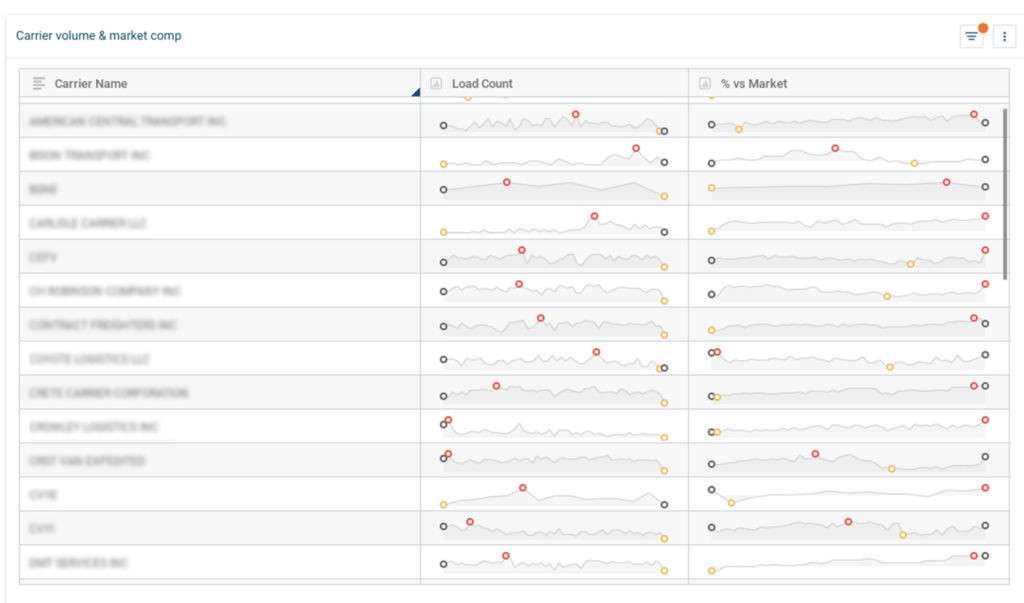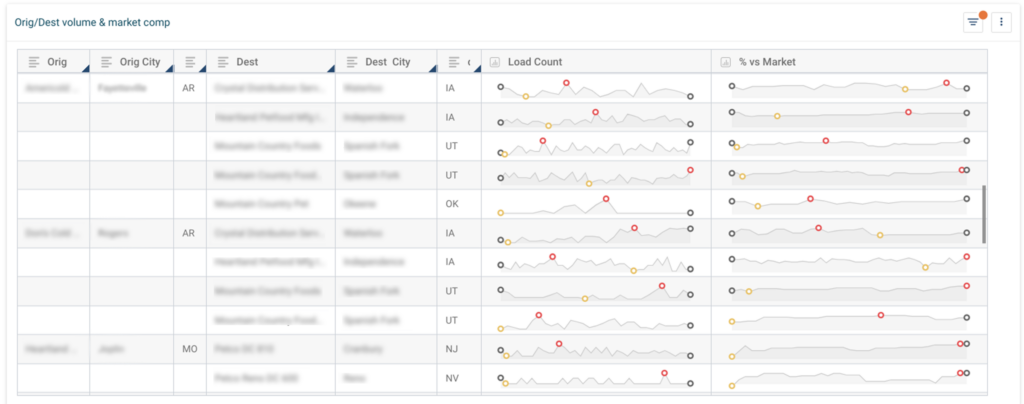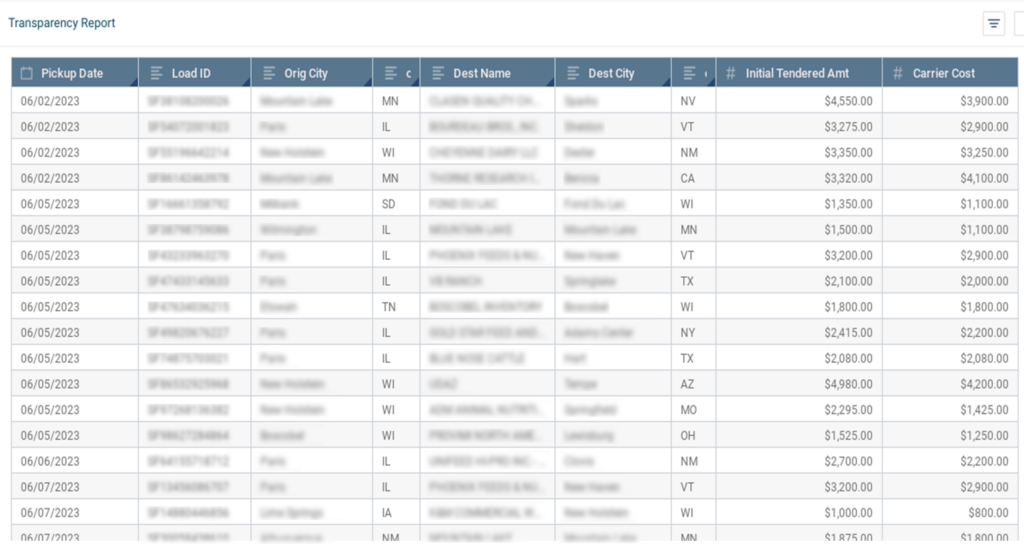Unleash The Power of
Actionable Data
Stop relying on historical data, or market averages on “similar” lanes.
Obtain insights on your “actual” lanes to level-set pricing and
service levels across your entire carrier network.
Shippers deserve to know and understand every facet of their transportation spend. Our advanced freight procurement data and analytics arm shippers with 100% transparency so corrective actions can be made to optimize the carrier network. It acts like a virtual transportation analyst! There are never any data gaps!

Obtain Carrier Identification
Shippers know exactly which carriers are hauling their freight.
![]()
Obtain Carrier Rates
Shippers know exactly what the truck is getting paid, there are never any hidden middlemen fees increasing truckload price.
![]()
Optimize Carrier Network
Shippers get actionable insights on their "actual" lanes to level-set pricing and improve service levels.
Most shippers don’t have advanced analytics to make strong data-driven transportation decisions. Our advanced analytics suite provides the logistics team with 100% data transparency along with actionable insights to easily and effectively manage freight procurement operations.
Our customers have access to many different filters and reports. Check out sample reports below and this sell sheet. Some fields have been blurred to safeguard the data, but are visible to active customers.
SAMPLE CHART 1
Shippers use this report to understand the maximum amount they were willing to pay per shipment against the actual dollar amount paid directly to the truck/carrier. This helps shippers understand true market cost, and what the carrier- not a broker- wants to get paid.
“I know exactly what the trucks are paid. There is 100% data transparency and never any hidden fees.” Warren Frank, Milk Specialties Global
SAMPLE CHART 2
Shippers use this report to understand origin & destination trends such as volume and market comparison. Minimum data points during the selected time period are denoted with a yellow circle, while maximum data points are denoted with a red circle.

SAMPLE CHART 3
Shippers use this report to understand shipments moved by individual carriers and the carrier’s market comparison over time. Minimum data points during the selected time period are denoted with a yellow circle, while maximum data points are denoted with a red circle. This data helps shippers when performing RFPs and/or negotiating freight rates.

Do you have data gaps?
Answer these questions to find out.
Unfortunately, if you’ve answered “NO” to any question, you have data gaps and are missing opportunities to cut logistics costs while improving service levels and customer satisfaction.
Privacy Policy | Terms of Service
© 2023 Sleek Fleet, DBA Sleek Technologies. All Rights Reserved.

